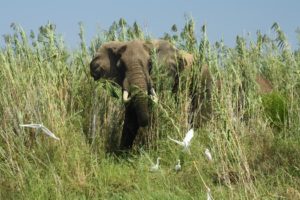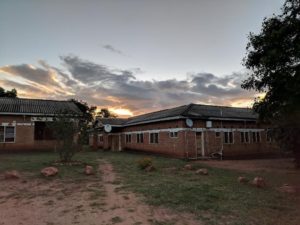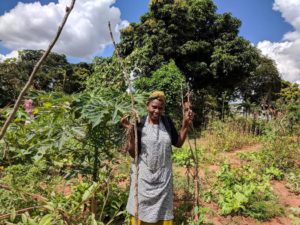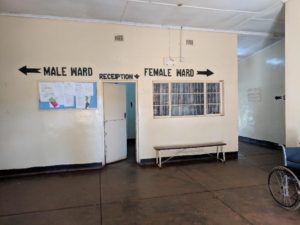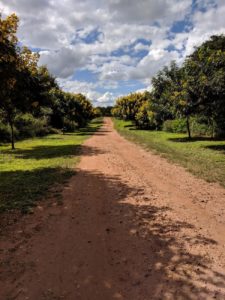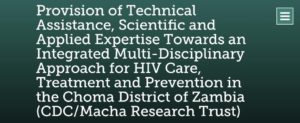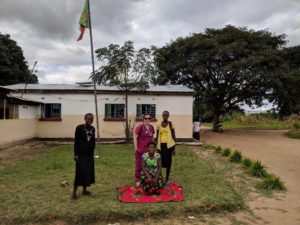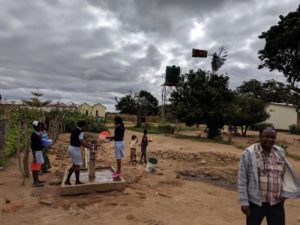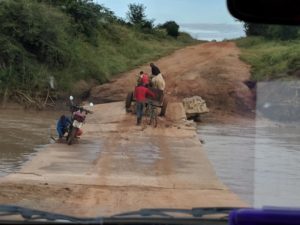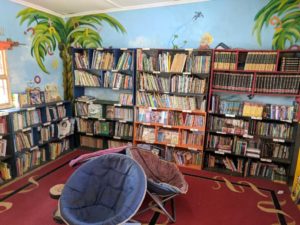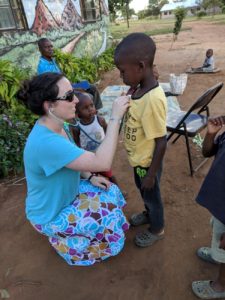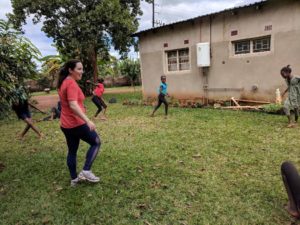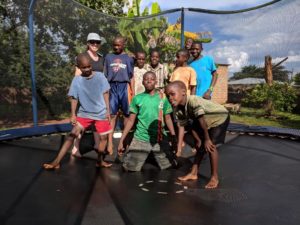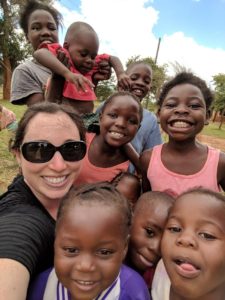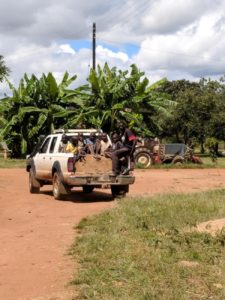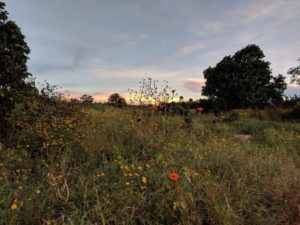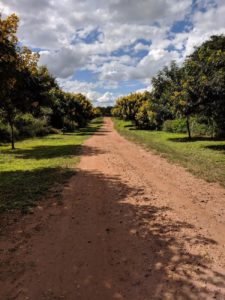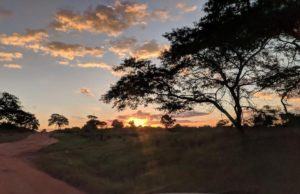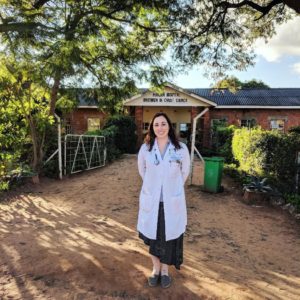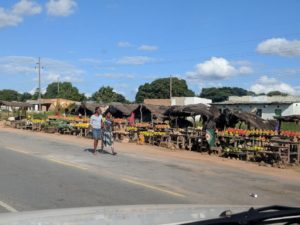That’s a Wrap!
April 30th, 2018 by jamiefelzer
Posted in Uncategorized|
I can’t believe my rotation is completed. This last week has been another successful one. On Tuesday morning the head doctor asked us to accompany him to a meeting. They had advisors for surgery coming to visit that come once a quarter to help ensure everyone is up to par on their techniques and equipment. It was good to see that there are groups checking up on all these rural health centers to offer some aide, however it was also quite evident that sometimes their expectations were different coming from a city hospital. Even from their last visit, the doctors had made some adjustments based on feedback and were continuing to work towards some other changes. When the inspectors brought up certain practice patterns, I was even a little defensive of Macha and wanted to say that they did a great job given their resources (but I kept my mouth shut). I had planned on going to theatre that day, but once they arrived I didn’t want to get in the way of any official visit so ended up seeing all the patients in OPD that day since many others were in surgery. Mondays and Tuesdays are often the craziest days in clinic due to the break on Sundays, so we were powering through a large number of patients.
Now that I’ve been here for a month, I’m already having repeat patients and people will come up to me to ask questions. I even had one find me before I left asking for my email address so she could follow-up regarding her son. I tried to say that I wasn’t a pediatrician (and had just remembered some key management from medical school), but she thought that I was wonderful and insisted upon following up. Obviously I stick out like a sore thumb around here, there are a total of 3 white people at Macha, including myself. I now have some understanding of what black people go through in predominantly white communities, everyone knows who you are.
We were asked to do a presentation on a topic for the medical officers here on any topic of our choosing. We weren’t quite sure what to expect for attendance because our friend had done it a few weeks before and nobody showed up. Instead of choosing one topic, we decided to start (and focus) on one area- Tuberculosis as all my public health flags were going up when actively infected TB patients were sitting next to the immunocompromised patients, as well as some other little things I had noticed. Daniel and I did a joint presentation on TB, where he talked about the pathophysiology and I focused on the epidemiology and public health interventions that could be used in resource-limited settings such as theirs. Every time I was on the wards where there was a TB patient, I talked to the nurses about moving them out to the veranda so hopefully between that and the talk, some changes can be implemented, as people seemed to be receiving them well. A big limiting factor was the lack of outlets on the veranda, and often the TB patients require oxygen, which is delivered via portable O2 tanks that must be plugged in. We tried to see if utilizing extension cords would be a feasible solution to this problem. During the talk, I also touched upon some other updates in medicine, such as treatment for rheumatic heart disease and congenital heart diseases, and how best to treat some of these things based on more current literature.
Before leaving, we were fortunate enough to get a tour of the Macha Research Trust laboratories. MRT is funded through a large grant from Johns Hopkins Bloomberg School of Public Health. They have accomplished remarkable tasks by significantly reducing the incidence and prevalence of malaria, so much so that they are now focusing on HIV work due to the low numbers of malaria in the area. They study the mosquitos under real-life conditions in an enclosed arena that has multiple houses and mosquito nets around the beds where paid volunteers sleep. They test to see if mosquitos are able to get in the houses, in the nets and then how many die (the nets are also treated). We got a tour of the remarkably modern laboratory facilities where they have been testing and archiving mosquitos for about 10 years. They check for levels of parasites, can see if they recently had a blood meal, test the genome of the mosquitos, and so many other details. They have all the modern microscopes, centrifuges and PCR that we are used to in our labs. On the HIV side of the research we were able to see the rapid test they are currently using for adults in the clinics. We also saw the new fancy machine that they are trying to get approval for, as it would be able to give a rapid diagnosis for infants born to HIV-positive mothers. Currently, it may take months to get the gold standard test back to know if infants are actually HIV-positive because they are born with their mother’s antibodies. This new test would allow them to know within a half-hour on site. The problem with getting approval for usage in Zambia lies in the fact that they have been so successful in reducing the mother to child transmission that there are not actually many proven positive infants. Hopefully, this device will soon be available for usage as it would truly be a game changer.
On my last day I walked around with a very heavy heart. Macha Mission hospital will always hold a special place in my heart. There were many sad goodbyes to all the people who made my month here an incredible one for my learning about medicine, myself, African culture and so much more. I know it may sound cheesy, but all the stars definitely aligned for me to come here given all the connections of my past decisions, and hopefully some will be part of my future. I am incredibly grateful to my residency program for allowing me this unorthodox, but completely invaluable medical training that will hopefully allow me to become an even better physician for all my patients in any circumstance.
General Thoughts, Reflections & Responses to Commonly Asked Questions
- The human body is incredibly resilient. Situations where we would’ve given up or gone to heroics such as ventilation or even ECMO people managed to live here.
- I saw more cachectic people (body fat of -0%) in 4 weeks than I have in the past 6 years of medical training
- Families are incredibly close here; they live together and take care of one another. Polygamy is common here so there are often families with 3 wives and 30+ kids. Given that most families have 4-10 kids everyone has many cousins and grow up playing together. People typically go home to visit their families/parents no matter how far away they are.
- People typically start having kids in late teens or early 20s. They have 4-12 kids for the most part, with most averaging around 6 or 8. We made a few jokes about how most of my patients were younger than me with more kids. After 3 c-sections or per patient request (typically after 10 kids) women would get a bilateral tubal ligation. Men do not get vasectomies here, and when I asked about it people looked at me like I was crazy.
- Most people live on the equivalent of a $1-3 a day. They walk far to get water every day and eat nshima (corn meal mush) for 2-3 meals a day
- I think black people either have more rods in their eyes (night vision mechanism) or are just less afraid/more used to the dark because they walk around at night in the pitch black with no lights while I have 2 bright lights and still get freaked out
- I’m probably the only Jew in the whole country, or at least in my area. (I actually learned that there was a big population of Jews in Livingstone, and there were multiple synagogues that I would’ve liked to visit if I had more time there)
- There is a different view of death and dying here, given the life expectancy is in the 50s and the infant mortality rate is high, people are more accustomed to the realities of death
- Drivers signal to each other that it’s okay to pass because all the paved roads (and there are only a few of them) are two lanes and there are many slow trucks
- There are still chiefs and on every admission form they asked for the village and chief. The chief is like the king from the olden days where people bring presents and kneel before them. I believe it is an election process but am not sure on that. The Macha chief is very well know because of MRT and Macha hospital.
- The official language is English and that is what is taught in all schools, however each Provence has their own dialects. In Macha and the surrounding area, the language was Tonga. The words I learned were Mobooka – good morning; baloomba- thank you; gujesia- pain; huega- deep breath.
- Every morning people greet each other with a true smile and say good morning.
- Every few years there is mass distribution of mosquito nets, which are typically also treated with insecticide. MRT inspects these as part of some of their projects and finds people are using them. In return, rates of malaria have significantly decreased and this year there have only been 4 cases where there are normally closer to 50. People often stay in the compound behind the hospital if they have family in the hospital or are following on lab work the next morning, so in those cases they don’t have a net and sleep in trees or on the ground, sometimes they bring tents. They cook with charcoal out in the open for all meals, unless they are the more fortunate few who have a stove.
- A lot of people make an income by selling items on the side of the streets, hence why it is better for people to live closer to the main highways. Unfortunately, transmission of HIV has also seemed to follow the highways and trucking routes. The food selling was significantly curtailed by the recent cholera outbreak where people had to stop selling foods on the road due to risk for contaminated products. The cholera outbreak was actually quite promptly resolved
- Personal space is different here; transportation is often with the masses on the back of a trailer truck as people sit on their bags of rice and potatoes holding on for dear life.
- Communities have been formed in the mountains because of the frequency with which trucks would break down and people would raid the trucks
- Meat is all free range here…goats, cows and chickens all freely roam the land and eat all the grass they want. Generally, people live off the land with gardens and eating the vegetables they grow. Corn is rampant here, hence nshima being the staple here. Kids will often be the ones responsible for herding the animals and are pretty good at getting them out of the roads quickly as cars come. Cows are used more for eating than milking.
- We don’t need to talk about all the terrible bugs and gross animals such as bats and rats that are here. Despite pre-treating everything with Permethrin and wearing DEET at all hours, I have somehow still managed a few bites, but nothing too bad.
- The landscape is simply beautiful. Untouched open plains either wildflowers and sunflowers free for miles in every direction. Blue skies and pretty clouds in the sunlight adds to that beauty. I haven’t seen a sunset or sunrise that didn’t leave me in awe yet, every one is simply breathtaking.
- HIV and all related care/medications are all covered for patients through the government and non-profits, so that cost doesn’t prohibit people from getting the care they need. Through organizations like EGPAF, there has been a very significant decline in the number of mother to child transmission! During my time in Dance Marathon/Pediatric AIDS Coalition at UCLA, we always talked about the power of ART in reducing transmission, so it is so very exciting that this has been made more of a reality. DM just happened this weekend actually at UCLA!
- The diagnostic tests available and treatment regimens are very different than those we use at home. Every decision requires a more thorough clinical examination and history, as well as clinical acumen for the underlying disorder. We had to be a little more creative with medications, and be smart of our usage of certain expensive, IV medications. They were often out of key medications, such as Metformin (a standard Diabetic medication) or cephalexin (an antibiotic we use for skin infections, UTIs especially in pregnant ladies) and every decision required creativity and smarts.
- Mothers will often stay near the hospital as they get closer to delivery, especially the higher-risk mothers. Each mother will get a pre-natal card giving their birth history, LMP, EDD (however, I’ve found that many of the dates were wrong) and the card also states if they have a birthing plan in place. Mothers are advised to go to the hospital for delivery to prevent risk of complications, but many use midwives or family at home. Many places don’t have ultrasounds so they wouldn’t routinely get an ultrasound, unless there was a perceived problem. They use a fetoscope to listen for the heart rate, something I never quite mastered. Whenever we have pregnant ladies in our clinic, I would automatically check them for syphilis, HIV and anaemia.
- Everyone was very grateful for the medical care they received, even if they had to walk for days and wait for hours to be seen.
If you have any questions or comments please feel free to comment or send me a message. If anyone feels inclined to make donations to any of the organizations that I’ve mentioned during my time here, I know any of them would of course be grateful. I’ve tried to include links during each blog post of any key organizations if anyone want to learn more about a particular group and their projects.
Baloomba. Thank you.

